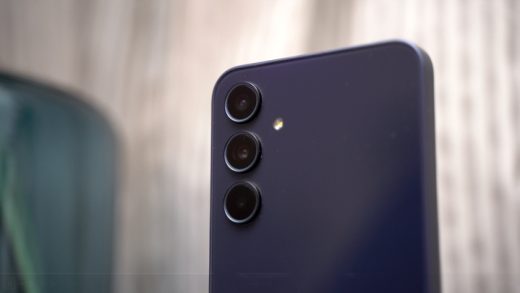Both Xiaomi and OnePlus have recently unveiled their flagship devices for 2020, the Mi 10-series, and the OnePlus 8-series. For those who are looking for more affordable versions of the said top-notch smartphones, there are the base models Mi 10 and One Plus 8. We compared each model to one another, and here’s what we found out. Read on to know more.

| OnePlus 8 | Xiaomi Mi 10 |
|---|---|
| 6.55-inch FHD+ (2400 x 1800) Fluid AMOLED display, HDR10+ | 6.67-inch FHD+ (2340 x 1080) AMOLED display, HDR10+ |
| 90Hz refresh rate | 90Hz refresh rate, 180 touch response rate |
| Corning Gorilla Glass | Corning Gorilla Glass 5 |
| Qualcomm Snapdragon 865 octa-core CPU | Qualcomm Snapdragon 865 octa-core CPU |
| Adreno 650 GPU | Adreno 650 GPU |
| 8GB, 12GB LPDDR4X RAM | 8GB, 12GB LPDDR5 RAM |
| 128GB, 256GB UFS 3.0 w/ Turbo Write and HPB | 128GB, 256GB UFS 3.0 w/ Write Turbo |
| Triple-rear cameras: • 48MP Sony IMX586 F1.75 OIS + EIS (main) • 16MP F2.2 (ultra-wide) • 2MP F2.4 (macro) | Quad-rear cameras: • 108MP 1/1.33″ F1.69 OIS + EIS (main) • 13MP F2.4 (ultra-wide) • 2MP F2.4 (macro) • 2MP F2.4 (depth) |
| 16MP Sony IMX471 F2.45 front camera (fixed-focus) | 20MP F2.0 front camera |
| Dual-SIM (nano) | Dual-SIM (nano) |
| 5G, 4G LTE | 5G SA/NSA, 4G LTE |
| WiFi 802.11 a/b/g/n/ac/ax | WiFi 802.11 a/b/g/n/ac/ax |
| Bluetooth 5.1 aptX HD | Bluetooth 5.1 aptX HD, aptX Adaptive, Qualcomm TrueWireless Stereo Plus |
| NFC | NFC |
| GPS (L1+L5 Dual Band), A-GPS, GLONASS, Galileo (E1+E5a Dual Band), Beidou, SBAS | GPS, A-GPS, BDS, Galileo, QZSS |
| Haptic Vibration 2.0 | -- |
| Fingerprint scanner (in-display) | Fingerprint scanner (in-display) |
| Face Unlock | Face Unlock |
| USB Type-C 3.1 | USB Type-C |
| Dual stereo speakers w/ Dolby Atmos | Dual stereo speakers |
| -- | IR Blaster, In-screen ambient light sensor |
| -- | Super VC Liquid Cooling |
| OxygenOS (based on Android 10) | MIUI 11 (based on Android 10) |
| 4,300mAh battery w/ Warp Charge 30T (5V/6A) | 4,780mAh battery w/ 30W PD fast charging, 30W wireless charging, 10W reverse wireless charging |
| 160.2 x 72.9 x 8.0 mm | 162.6 x 74.8 x 8.96 mm |
| 180 g | 208 g |
| Onyx Black, Interstellar Glow, Glacial Green | Titanium Silver Black, Peach Gold, Ice Blue |
| Price: • 8GB + 128GB: USD 699 (Glacial Green) • 12GB + 256GB: USD 799 (Interstellar Glow) | Price: • 8GB + 128GB: CNY 3,999 • 8GB + 256GB: CNY 4,299 • 12GB + 256GB: CNY 4,699 |
Summary of advantages:
OnePlus 8:
- Has higher resolution for the ultra-wide camera
- Better GPS capabilities
- Has Haptic Vibration feature
Xiaomi Mi 10:
- Larger screen size with a touch response rate
- Has higher resolution for the main camera
- Faster RAM
- Quad-rear cameras
- Inclusion of depth camera
- Super VC Liquid Cooling
- Has a fast wireless charging
Table of Contents
Display
While both boast AMOLED panels, the Xiaomi Mi 10 has a slightly bigger 6.67-inch FHD+ display with a 180Hz touch response rate. Meanwhile, OnePlus 8 has 6.55-inch FHD+. Both smartphones also sport 90Hz refresh rates and HDR10+ capable displays. OnePlus is yet to disclose the type of Corning Gorilla Glass protection it has used for the OnePlus 8. Mi 10, on the other hand, comes with Corning Gorilla Glass 5.
Performance
Hardware-wise, the Xiaomi Mi 10 and the OnePlus 8 share a lot of similarities. Both devices get 5G-capable chipsets from Qualcomm and are equipped with Adreno 650 GPU. It has almost the same memory configuration, but the Mi 10 has a faster LPDDR5 compared to OnePlus 8’s LPDDR4X. To sustain the performance during heavy workloads, the Xiaomi Mi 10 also comes with Super VC Liquid Cooling.
Cameras
Xiaomi outnumbers OnePlus in terms of camera sensors, bringing in quad-rear cameras instead of OnePlus 8’s triple-rear cameras. On paper, the Mi 10 has a massive 108MP main accompanied by 13MP ultra-wide, 2MP macro, and 2MP depth sensors. Alternatively, the OnePlus 8 is equipped with 48MP Sony IMX586 main, 16MP ultra-wide, and 2MP macro lenses. On the flip side, both smartphones have hybrid stabilization on their main rear cameras.
The statement remains the same for the front camera, with Mi 10’s 20MP front shooter, which has a higher resolution than OnePlus 8’s 16MP Sony IMX471 fixed-focus front camera.
But take note that the number of megapixels and cameras don’t always guarantee the quality. We’ll know which one has a better camera when we have both devices for review.
Other features
OnePlus 8 offers several unique features. Aside from having better GPS capabilities, the smartphone features haptic vibration for a more immersive mobile gaming experience, faster data transfer speed via USB 3.1, and a better speaker system powered by Dolby Atmos. On the other hand, the Mi 10 reduces latency and improves the connectivity of linked wireless earbuds through Qualcomm TrueWireless Stereo Plus and allows users to control their smart home devices through its IR Blaster. It also has MultiLink which ensures stable and uninterrupted internet connection.
Battery
It’s a no-brainer that for this round, the Mi 10 wins with 4780mAh battery partnered with 30W PD fast wired charging, 30W wireless charging, and 10W reverse wireless charging. OnePlus 8 also lacks the wireless fast-charging and reverse charging capabilities of its sibling, the OnePlus 8 Pro. The One Plus 8, however, comes with the Warp Charge 30T that fills a drained battery up to 50% as fast as 22 minutes.
Price
Here is the price list for the phones:
OnePlus 8
• 8GB + 128GB: USD 699 (Glacial Green)
• 12GB + 256GB: USD 799 (Interstellar Glow)
Xiaomi Mi 10
• 8GB + 128GB: CNY 3,999
• 8GB + 256GB: CNY 4,299
• 12GB + 256GB: CNY 4,699
OnePlus is currently rolling out the OnePlus 8 in the US, UK, and other European countries via its website and other online channels like Amazon. The story is different for the Xiaomi Mi 10 with its availability in China. It is also scheduled to launch in Europe, shipping in the 8GB RAM+ 128 GB and 8GB + 256GB variants.
There are no words yet about local pricing and availability of the said smartphones, but we are sure that both will make its way in the Philippines.
If you’ve been yearning for a flagship device with 5G connectivity topped with extra features, then the OnePlus 8 is for you. Nevertheless, you get better cameras and battery life with wireless and reverse charging features with the Xiaomi Mi 10.
So, which smartphone do you prefer? Let us know in the comments below.

























The new LPDDR5 that is (MI NOTE 10 is using) is around 1.5x faster than the LPDDR4x in terms of data transfer. The transfer speed of the LPDDR5 is 51.2 Gbps and a pin speed of 6,400 Mbps.
it would really be great if you also included a Peso converted price tag for the devices that you feature